Cat D1/D + D+E/D1+E Mock Test 1
Fifteen passengers on your vehicle would increase the weight by about:
0.5 tonne
1.0 tonne
2.5 tonne
3.0 tonne
As a guide, how many passengers equal the weight of about one tonne?
30
25
20
15
As you are driving along your brake air pressure warning light comes on.
You should:
Report the fault on return to your depot
Drain air tanks and continue normally
Stop and seek help without delay
Boost the pressure through added acceleration
Brake fade happens when the brakes get too:
Hot
Cold
Wet
Dry
Which THREE of the following are advantages of progressive braking when driving a bus?
Mark 3 Answers
Passenger safety and comfort
Increased air brake pressure
Reduction of fuel consumption
Reduced tyre wear
Avoidance of 'brake fade'
To prevent brake fade you should:
Mark 2 Answers
Use the endurance brake (retarder)
Select a lower gear
Apply the parking brake
Repeatedly pump the brake pedal
Select neutral for a short distance
As a bus driver your first consideration is to your:
Workmates
Passengers
Employer
Timetable
As a bus driver your main responsibility is:
The safety and comfort of your passengers
The issuing of tickets
The collecting of fares
Keeping to a strict timetable
As a bus driver you should show care to your passengers. You can do this by: MARK 2 ANSWERS:
Giving them time to get seated
Stopping close to the kerb
Not speaking when taking fares
Reaching destination earlier than expected
What is the MAIN reason for maintaining a smooth acceleration when driving your bus?
To improve fuel consumption
To reduce wear on the engine
To reduce wear on the tyres
To improve passenger comfort
When driving a bus what are your main priorities? MARK 2 ANSWERS:
The comfort of your passengers
The safety of your passengers
Making sure passengers take their luggage
Greeting all passengers with a smile
Keeping strictly to your timetable
For the comfort of your passengers harsh braking should be avoided. You should therefore:
Use the parking brake just before stopping to avoid throwing passengers forward
Use the gears to slow down
Pump the brakes when approaching a bus stop and hazards
Plan ahead and take early action on all stops and hazards
If a bus driver brakes harshly the passengers may be thrown towards
The front of the bus
The offside
The nearside
The rear of the bus
How can you avoid harsh braking?
Pump the brake pedal several times
Plan ahead and take early action
Gently apply the parking brake
Slow down by using your gears only
Well ahead of you are traffic lights on green. What should you do in case the lights change to red?
Slow down to avoid the need to stop suddenly
Accelerate but warn your passengers you may have to stop
Accelerate to make sure you can cross before they change
Carry on at a constant speed but be ready to sound your horn
For passenger safety and comfort you should always: MARK 3 ANSWERS:
Think well ahead
Brake smoothly
Stop close to the kerb
Drive with the door open
Give change on the move
Brake hard on a bend
Before moving off from a standstill a bus driver should be especially aware of passengers who attempt to: MARK 2 ANSWERS
Refuse to pay
Ask you questions
Smoke
Get on
Get off
Change seats
A passenger with special needs is boarding your bus and he tells you that getting on board is not a problem for him. You should:
Do nothing you cannot leave your seat
Leave your cab and help him
Ask a passenger to help him
Let him board without help
While driving a bus carrying passengers at night you should always put the interior lights on because:
It will help you see your controls
It will help passengers to see outside
It will help you see the road ahead
It will help passengers to move around
As you move off watch out in particular for any passengers who attempt to:
Avoid paying the correct fare
Stand in the upper saloon
Smoke in the lower saloon
Board the bus
When you pull away from a bus stop watch out in particular for passengers who attempt to:
Use an expired travel pass
Smoke in the lower saloon
Avoid paying the correct fare
Alight from the bus
If a passenger finds walking difficult what could you do to help?
Suggest he stands near the door
Make sure he has a window seat
Drive quickly so that the passenger will not be on for long
Wait until the passenger is sitting down before moving away
A bus driver MUST not drive whilst: MARK 3 ANSWERS:
Giving change
The doors are open
Luggage is being carried
Passengers are standing
Issuing tickets
Wearing sunglasses
Entrance to roundabouts are slippery when wet. You should always:
Sound your horn
Brake in good time
Use the handbrake
Brake late
What should you do every time before pulling into or moving out from a bus stop?
Stop before the zigzag lines
Carry out the MSM (Mirrors-Signal-Manoeuvre) routine and proceed with extreme caution.
Sound my horn as many times as necessary so other vehicles can get out of my way
Drive as carefully as I can depending on how heavy the traffic is.
Tell my passengers to hold on tight so they do not fall of their seats.
You are driving in heavy rain. Your steering suddenly feels light. What should you do?
Brake hard
Steer to the centre line
Ease off the accellerator
Increase speed
If your bus and other vehicles have been involved in an accident what should you do? MARK 2 ANSWERS:
Drive on for help
Turn vehicles the right way up
Switch off the fuel supply
Switch off their headlights
Drive to the nearest police station
Stop at the scene of the accident
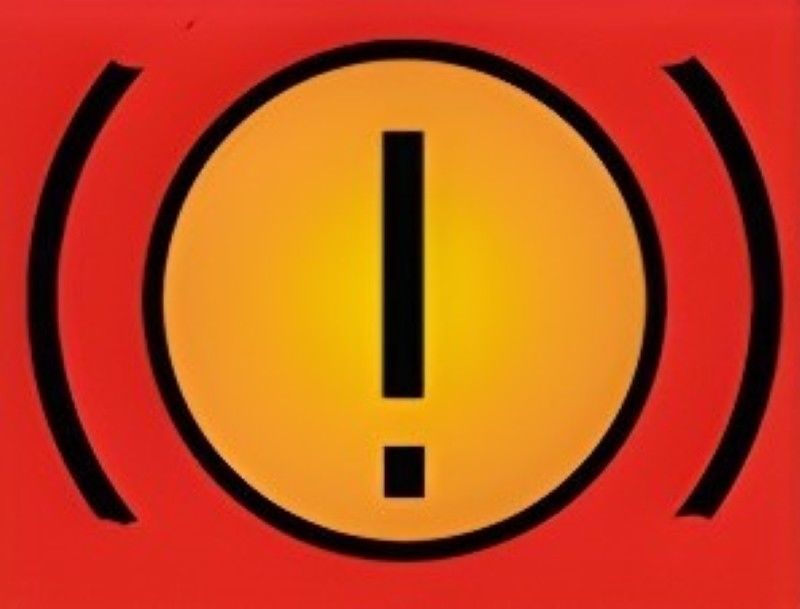
What does this warning light on the instrument panel mean?
Low oil pressure
Battery discharge
Braking system fault
Door open
As a bus driver your main aim is to:
Make sure that you are on schedule
Be of service to your colleagues
Keep passengers safe
Keep an accurate account of your ticket sales
You are a bus driver. You are at a bus stop issuing tickets. You should:
Engage gear without signalling
Signal only before moving off
Engage gear and signal
Engage neutral gear and signal that you are moving off
Your nearside mirror is there for you to check:
If the driver's door is closed
If vehicles are overtaking from the left
If passengers are sitting down
If vehicles are about to park ahead
When you intend to open your right-hand door you should check:
The mirror
All other doors are closed
The air pressure
That no passengers are onboard
Where should you pull up when stopping to collect passengers from a bus stop?
Close to the kerb
Before the bus stop
After the bus stop
Away from the kerb
You should stop your bus, to allow passengers to get on or off, near:
Parked cars
Guard rails
Soft grass
The kerb
Several cars have parked blocking your bus stop. Before you allow passengers to get off you should:
Check it is clear of traffic on the right
Try and find the car owners
Move on to the next bus stop
Check that the left side is clear of traffic
What should you do before allowing passengers off your bus?
Ask if they have luggage to collect
Activate an audible warning system
Collect their used tickets
Check mirrors before opening doors
If some passsengers may be in a hurry to get off the bus as you approach a bus stop. What should you do to avoid any danger?
Let passengers on the bus before letting passengers off
Pull up just before the stop and let passengers get off
Insist that passengers stay seated until the bus stops
Not open the passengers doors until the bus stops
What should you first check before moving to the LEFT?
The nearside (left) mirror
The offside (right) mirror
Behind, over your left shoulder
Behind, over your right shoulder
Which of the following vehicles are MOST likely to cause severe damage to the road surfaces? MARK 2 ANSWERS
Lorries
Busses
Cars
Motorcycles
Bicycles
You are waiting for some time in a stationary traffic queue. Why should you switch your engine off? MARK 3 ANSWERS
To reduce exhaust fumes
To prevent local annoyance
To reduce television interference
To save on vehicle air pressure
To reduce noise levels
If you are about to overtake a motorcyclist and he looks over his right shoulder. It is most likely that:
The rider intends moving to the right
The rear tyre is flat
The drive chain is slack
Something has fallen from the machine.
You are driving behind a moped and you want to turn left at a junction just ahead. You should:
Stay behind until the moped has passed the junction
Sound your horn as a warning and pull in front of the moped
Pull alongside the moped and stay level until just before the junction
Overtake the moped before the junction
Another vehicle has overtaken you and has pulled in too close in front. You should:
Slow down
Flash your headlights
Overtake the vehicle
Drive on close behind
A large vehicle is most stable when driven in a straight line under:
Harsh braking
Gentile braking
Gentile acceleration
Harsh acceleration
You should be careful NOT to allow your vehicle to spill diesel fuel onto the road. It can be a serious risk ESPECIALLY to:
Motorcycles
Fire engines
Towed vehicles
Empty Bowsers
You are driving a vehicle with excessive exhaust smoke. Which TWO of the following is correct?
You are breaking the law
You could cause the brakes to fade
You risk reducing your vision ahead
You risk being reported
You are following a scooter. The rider has left it too late to avoid potholes in the road. You should be aware that the rider may suddenly:
Turn left
Slow down
Overtake
Accelerate
Brake fade' is a loss of brake effectiveness caused by their continuous use. This may happen when driving:
On a long uphill gradient
On a long downhill gradient
On the approach to hazards
On a long journey
The main cause of brake fade is:
The brakes overheating
The brakes out of adjustment
Oil on the brake lining
Moisture in the air tanks
You are behind a large vehicle. How can you improve your view ahead?
Stay further back
Overtake as soon as you can
Move over to the left
Move over to the right
You should overtake at night only when:
You can do so without cutting in
You can see well ahead
The road is well lit
You are outside built-up areas
There is an overtaking lane
After driving through a flood you should:
Pump the footbrake when approaching hazards
Drive in low gear with the footbrake lightly applied
Avoid braking until the brakes are dried out
Carry out an emergency stop
Coasting downhill could seriously affect the correct working of what?
Air brakes
Electrical systems
Tachograph
Cooling system
Many vehicles are fitted with power-assisted steering. You need to be aware that this:
Senses when you start to turn the wheel
Makes the steering seem light
Only works at high speeds
Makes it easier for you to steer
Prevents you from over steering
Causes less tyre wear
On a vehicle with automatic transmission you would use 'kickdown' to:
Give quicker acceleration
Go down a steep hill
Stop more smoothly
Apply the emergency brakes
What should you do if you are driving in busy traffic and you lose your way?
Check a map as you keep moving with the traffic
Shout to other drivers to ask them the way
Drive on until you find a safe place to stop
Stop at traffic lights and ask pedestrians
Your nearside mirror is most likely to endanger pedestrians when:
Passing a traffic sign
Braking hard on a bend
Driving close to the kerb
Using a crawler lane
You should use the 'two-second rule':
When emerging on wet roads
To keep a safe distance from the vehicle in front
Before using the 'Mirror - Signal - Manoeuvre' routine
Before restarting the engine after it has stalled
Before starting your engine your seat should be adjusted for: MARK 3 ANSWERS:
Distance from the controls
Back support
Leaving the cab
Air ventilation
Height
Seat belt tension
A properly adjusted head restraint will:
Help you to maintain your driving position
Help you to avoid neck injury
Help you to relax
Make you more comfortable
What could reduce the risk of neck injury in a collision?
A collapsible steering wheel
Anti-lock brakes
An air-sprung seat
A properly adjusted head restraint
You may remove your seat belt when carrying out a manoeuvre that involves:
Reversing
Driving slowly
An emergency stop
A hill start
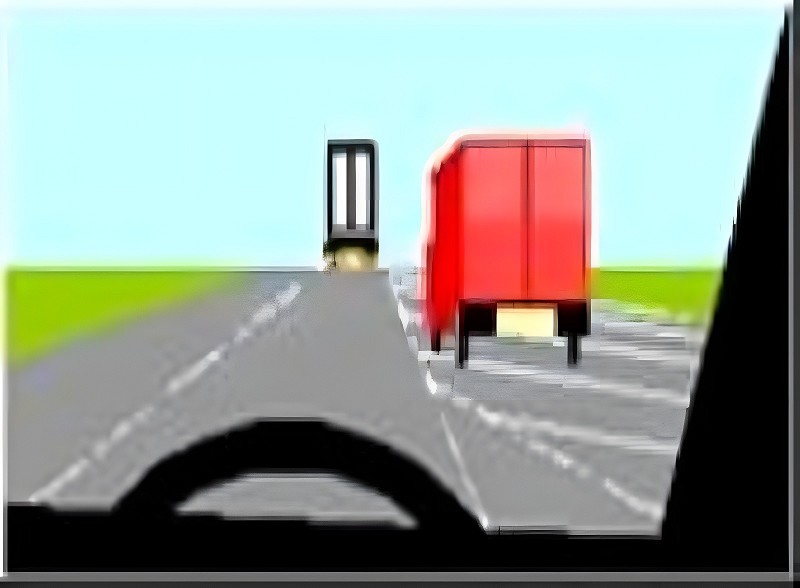
You are driving along this road. The red van cuts in close in front of you. What should you do?
Flash your headlights several times
Drop back to leave the correct separation distance
Give a long blast on the horn
Accelerate to get closer to the red van
While driving you approach a large puddle that is close to the left-hand kerb. Pedestrians are close to the water. You should: MARK 2 ANSWERS
Try to avoid splashing the pedestrians
Wave at the pedestrians to keep back
Slow down before the puddle
Brake suddenly and sound your horn
Ignore the puddle
What should you do if a long heavily laden lorry is taking a long time to overtake you?
Change direction
Slow down
Hold your speed
Speed up
You are driving a slow-moving vehicle on a narrow road. If a car wishes to overtake you should:
Stop immediately and wave them on
Put your hazard warning lights on
Take no action
Pull in safely as soon as you can do so
You are driving a slow-moving vehicle on a narrow winding road. In order to let other vehicles overtake you should:
Keep left and hold your speed
Pull in when you can
Show a left turn signal
Wave to them to pass
What should you use your horn for?
To alert others to your presence
To signal your annoyance
To greet other road users
To allow you right of way
You are following a car driven by a learner driver. You cannot overtake it. You should: MARK 2 ANSWERS:
Be ready for mistakes made by the driver
Drive along the centre line of the road
Be patient and stay well behind
Switch your hazard lights on and stay well behind
Flash your lights so that the driver sees you
Large vehicles have many blind spots. What does 'blind spot' mean?
An area of road that is not lit by your headlights
An area of road covered by your left hand mirror
An area of road that cannot be seen in your mirrors
An area of road covered by your right hand mirror
You are driving a vehicle fitted with a hand-held telephone. To answer it you should
Find a safe place to stop
Be very careful when dealing with junctions
Steer your vehicle with one hand
Reduce your speed to less than 30 kph
You have a mobile telephone fitted in your vehicle. It should only be used when you are:
Stopped in a safe place
In light traffic
On a motorway
Traveling slowly
A pelican crossing that crosses the road in a STRAIGHT line and has a central island must be treated as:
Two crossings during darkness
Two separate crossings
One crossing in daylight only
One complete crossing
At a zebra crossing you should:
Wave pedestrians to cross if you intend to wait for them
Park only on a zigzag lines on the left
Always leave it clear in traffic queues
Rev your engine to encourage pedestrians to cross quickly
In fast traffic a two-second gap may be enough only when conditions are:
Dry
Foggy
Damp
Wet
Following a large goods lorry too closely is dangerous because:
Your field of vision is seriously reduced
Your brakes need a constant cooling effect
Your engine will overheat
Slipstreaming will reduce wind effect
A coach is overtaking you. When it is safe for the coach to move back to the left you should:
Reduce speed and leave a saftey distance
Do nothing and let the driver decide
Flash your headlights once or twice
Switch your sidelights on and off
What should you do when being followed by an ambulance showing a flashing blue beacon?
Pull over as soon as safely possible to let it pass
Brake harshly and immediately stop in the road
Ignore it but let it pass if it forces its way
Accelerate hard to get away from it
A bus has stopped at a bus stop ahead of you and its right-hand indicator is flashing. You should:
Slow down and then sound your horn
Slow down and give way if it is safe to do so
Sound your horn and keep going
Flash your headlights and slow down
You stop for pedestrians waiting to cross at a zebra crossing. They do not start to cross. What should you do?
Be patient and wait
Wave them to cross
Drive on
Sound your horn
You should beckon pedestrians to cross the road at:
School crossings
No time
Junctions
Pedestrians crossing
You should never wave people across at zebra crossings because:
There may be another vehicle coming
They may not be ready to cross
It is safer for you to carry on
They may not be looking
You are driving close to the kerb in a busy shopping area. What dangers should you be most aware of? MARK 3 ANSWERS:
The amount of fuel being used when driving slowly
Traffic lights suddenly changing to green
Cyclists moving up the left side of your vehicle
The nearside mirror striking the pedestrians
Pedestrians stepping off the edge of the pavement
You have stopped for an elderly pedestrian who is slowly crossing the road. Traffic behind you is being held up. What should you do?
Get out of your vehicle and wave him across
Remain where you are and allow him to cross in his own time
Steer slowly around him to ease the build up of traffic
Edge slowly forward and make him hurry
Where should you NOT park your vehicle or trailer: MARK 3 ANSWERS:
At an overnight service area
Opposite a traffic island
In a factory yard
In front of an entrance to a property
Near the brow of a hill
You are driving a slow moving vehicle along a narrow road. You should let other vehicles overtake by:
Giving a left turn signal
Waving them past
Maintaining a steady speed
Pulling in when you can
As you drive past a group of school children standing close to the kerb you should:
Switch on your hazard lights
Switch on your headlights
Check your offside mirror
Check your nearside mirror
You are driving at a legal speed limit. A vehicle comes up quickly behind flashing its headlights. You should:
Maintain your speed and prevent the vehicle from overtaking
Touch the brake pedal sharply to show your brake lights
Accelerate to maintain a gap behind you
Allow the vehicle to overtake
A vehicle pulls out in front of you at a junction. What should you do?
Accelerate past it immediately
Flash your headlights and drive up close behind
Swerve past it and sound your horn
Slow down and be ready to stop
Your mobile phone rings while you are driving. You should:
Pull up at the nearest kerb
Answer it immediately
Pull up in a suitable place
Stop immediately
You are most likely to lose concentration when driving if you:
Use a mobile phone
Look at the side mirrors
Switch on the heated rear windows
Switch on the windscreen wipers
You should ONLY use a mobile/cellular phone when:
Driving an automatic vehicle
Driving at less than 30 kph
Receiving a call
Suitably parked
Which THREE result from drinking alcohol and driving? MARK 3 ANSWERS:
A false sense of confidence
Less control
Greater awareness of danger
Poor judgment of speed
Faster reactions
Which THREE of these are likely effects of drinking alcohol on driving? MARK 3 ANSWERS:
Increased confidence
Reduced coordination
Poor judgment
Colour blindness
Faster reactions
Increased concentration
Drinking any amount of alcohol is likely to: MARK 3 ANSWERS:
Give a false sense of confidence
Increase your awareness of danger
Worsen your judgment of speed
Increase the speed of your reactions
Reduce your ability to react to hazards
What else can seriously affect your concentration when driving, other than alcoholic drinks? MARK 3 ANSWERS:
Loud music
Tiredness
Contact lenses
Tinted windows
Drugs
How does alcohol affect your driving?
It improves your coordination
It increases your awareness
It speeds up your reactions
It reduces your concentration
Your doctor has given you a course of medicine. Why should you ask if it is OK to drive?
The medicine you take may affect your hearing
You will have to let your insurance company know about the medicine
Some types of medicine can cause your reactions to slow down
Drugs make you a better driver by quickening your reactions
You are about to drive home. You feel very tired and have a severe headache. You should
Wait until you are fit and well before driving
Wait for a short time then drive home slowly
Drive home if you can stay awake for the journey
Drive home but take a tablet for headaches
You are waiting at a T-junction. A vehicle is coming from the right with the left signal flashing. What should you do?
Move out slowly
Wait until the vehicle starts to turn in
Pull out before the vehicle reaches the junction
Move out and accelerate hard
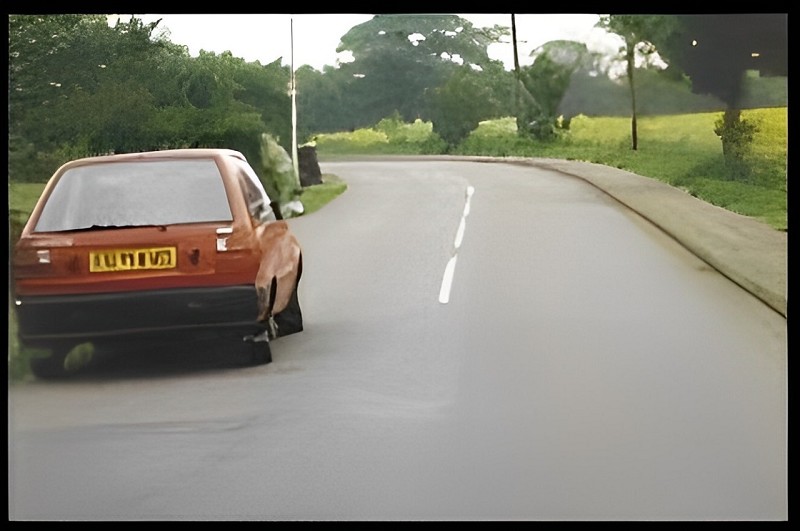
You are about to pass this car. What are the TWO main hazards you should be aware of? MARK 2 ANSWERS:
The narrow pavement on the right
The parked car may move off with no warning
The driver's side door may suddenly open
Bright sunshine reflecting of the car windscreen
Before braking in wet conditions you should make sure as far as possible that:
There is no mist on your rear view mirrors
All spray suppression equipment is working
The gear lever is in neutral
Your vehicle is traveling in a straight line
When driving on which TWO occasions would you be most likely to experience weight transfers? MARK 2 ANSWERS:
Loading
Cornering
Unloading
Overtaking
Braking
Reversing
When driving a laden vehicle downhill the effect of gravity will tend to: MARK 3 ANSWERS:
Reduce stopping distances
Increase stopping distances
Require more braking effort
Require less braking effort
Make the vehicle's speed increase
Make the vehicle use more fuel
Which of these vehicles is most at risk from strong crosswinds on motorways?
A motorcycle
A road bowser
A sports car
An unladen lorry
You are driving a large vehicle in gusty conditions. Which of the following is most likely to be affected when you overtake it?
A motorcycle
A loaded bowser
A car
A flat-bed lorry
Which road users are in the most danger from the buffering effects of large vehicles? MARK 3 ANSWERS
Tractor drivers
Cyclists
Horse riders
Pedestrians
Coaches drivers
Lorry drivers
Turbulence is created by large vehicles traveling at speed. This is most likely to be a danger to: MARK 4 ANSWERS
Pedestrians
Caravans
Tankers
Motorcyclists
Cyclists
Low-loaders
You are following a scooter on an uneven road. You should:
Allow extra room they may swerve to avoid pot holes
Drive close to shield them
Drive closely behind and get ready to overtake
Leave less room so they can see you in their mirrors
The road is wet. Why might a motorcyclist steer around drain covers on a bend?
To prevent the motorcycle skidding
To avoid splashing pedestrians
To help steer around the bend
To avoid puncturing the tyres
In heavy rain what is the least amount of space you should allow for braking?
Twice the normal distance
Five times the normal distance
Three times the normal distance
The normal distance
You are driving on a dual carriageway the vision a head of you is poor due to heavy spray. Which THREE of the following should you do? MARK 3 ANSWERS
Switch on your full-beam headlights
Move into the lane on the right
Switch on your dipped headlights
Reduce your speed
Use the four-second rule
You are driving in heavy rain. Why is there a need to increase your distance from the vehicle in front? MARK 3 ANSWERS:
To reduce the risk of water spraying into filters
Normal stopping distances could be doubled
Spray from traffic will make it difficult to see ahead
To prevent rain entering the vehicle's braking system
The tyres will have less grip on the road surface
A car driver pulls out causing you to brake. You should:
Keep calm and not retaliate
Flag the driver down and explain the mistake
Drive close behind and sound your horn
Overtake and sound your horn
Tailgating another vehicle is dangerous because: MARK 2 ANSWERS
Your view to the rear is reduced
Your braking time is increased
Your job could be at risk
Your view ahead is reduced
Your room for braking is reduced
You should take care when overtaking at night because:
Most towns are not adequately lit
Large vehicles are subject to a 10% speed reduction
Every driver will normally be tired
Speed and distance are harder to judge
What should you do before overtaking or changing lanes?
Check your mirrors carefully
Change to a lower gear
Look over your left shoulder
Increase your speed gently
You have just overtaken another vehicle. When moving back in you should avoid:
Cutting in
Signaling
Increasing your speed
Changing gear
You should not overtake when: MARK 3 ANSWERS
Approaching motorway exits or slip roads
Other road users would have to slow down
You are unable to see clearly ahead
Your view of the road ahead is clear
There are signs and road markings that allow you to overtake
You would have to break the speed limit
After overtaking another large vehicle how would you know when it was safe to move back to the nearside lane?
By waiting for the driver you have just overtaken to flash the headlights
By checking your nearside mirror
By using your hazard warning lights as a signal
By moving over to the nearside in the hope that the other vehicle will slow down
Because of its size and design a large vehicle will have:
No blind spots at all
More blind spots than smaller vehicle
The same blind spots as smaller vehicles
Less blind spots than smaller vehicles
You are driving on a dual carriageway and intend to overtake the vehicle ahead. Behind there is a car approaching quickly in the right-hand lane. You should:
Keep behind the slower vehicle
Stay on the left. Large vehicles cannot use the right-hand lane
Move up closer to the slower vehicle
Signal and move out
What should you do after overtaking on a dual carriageway?
Move back to the left as soon as possible
Switch your rear lights on and off
Wait until the other driver flashes their headlights
Indicate left then right
You are intending to turn right at a roundabout driving a long vehicle. You need to occupy part of the left hand lane. You should check mirrors and:
Signal right after entering the roundabout
Signal right on approach
Avoid giving a signal on approach
Signal left on approach
You are driving at night in a built up area. To ensure that you can be seen you should use:
Dipped beam headlights
Front fog light only
Side lights only
High beam headlights (Bright)
At an accident a casualty is unconscious. Which three of the following should you check urgently? MARK 3 ANSWERS:
Breathing
Airway
Broken bones
Circulation
Shock
You arrive at the scene of an accident that has just happened and someone is unconscious. Which of the following should be given urgent priority to help them? MARK 3 ANSWERS:
Stop any heavy bleeding
Take the numbers of vehicles involved
Check that they are breathing
Look for any witnesses
Clear the airway and keep it open
Try to get them to drink water
At an accident a casualty is unconscious but still breathing. You should only move them if:
Bystanders will help you to
Bystanders advise you to
There is further danger
An ambulance is on its way
Which type of fire extinguisher should NOT be used on flammable liquids?
Water (red)
Carbon Dioxide (black)
Dry powder (blue)
Foam (cream)
Before driving through a tunnel what should you do?
Switch on windscreen wipers
Close your sunroof
Switch your radio off
Remove your sunglasses
You are driving through a tunnel and the traffic is flowing freely. What should you do?
Use rear fog lights
Use front spot lights
Use dipped headlights
Use parking lights
You are driving through a congested tunnel and had to stop in trafic. What should you do?
Switch on your hazard warning lights
Ignore any message signs as they're never up to date
Keep a safe distance from the vehicle in front
Pull up very close to the vehicle in front to save space
You are driving through a tunnel. Your vehicle breaks down. What should you do?
Switch on hazard warnings lights
Rely on CCTV cameras seeing you
Wait for the police to find you
Remain in your vehicle
You have an accident while driving through a tunnel. You are not injured but your vehicle cannot be driven. What should you do first?
Sweep up any debris that is in the road
Take the names of witnesses and other drivers
Rely on other drivers phoning for the police
Switch off the engine and switch on hazard lights
Whilst driving your steering suddenly becomes heavy to turn. What could this indicate? MARK 2 ANSWERS:
A puncture in a front tyre
A failure of power-assisted steering
A faulty parking brake
Loss of air brake pressure
Missing front wheel nut
Air tanks on brake systems require draining because:
Any engine leakages are directed here
Rain water can often seep in
Excess coolant may collect in them
Moisture drawn in from the atmosphere
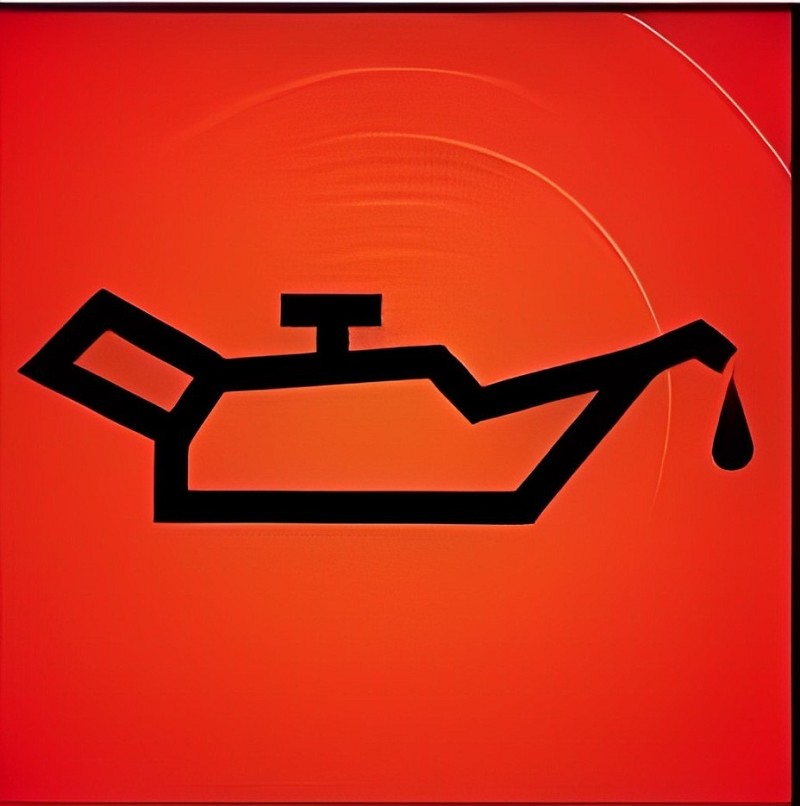
What does this warning light on the instrument panel mean?
Low air pressure
Low oil pressure
Low water pressure
Low fuel pressure
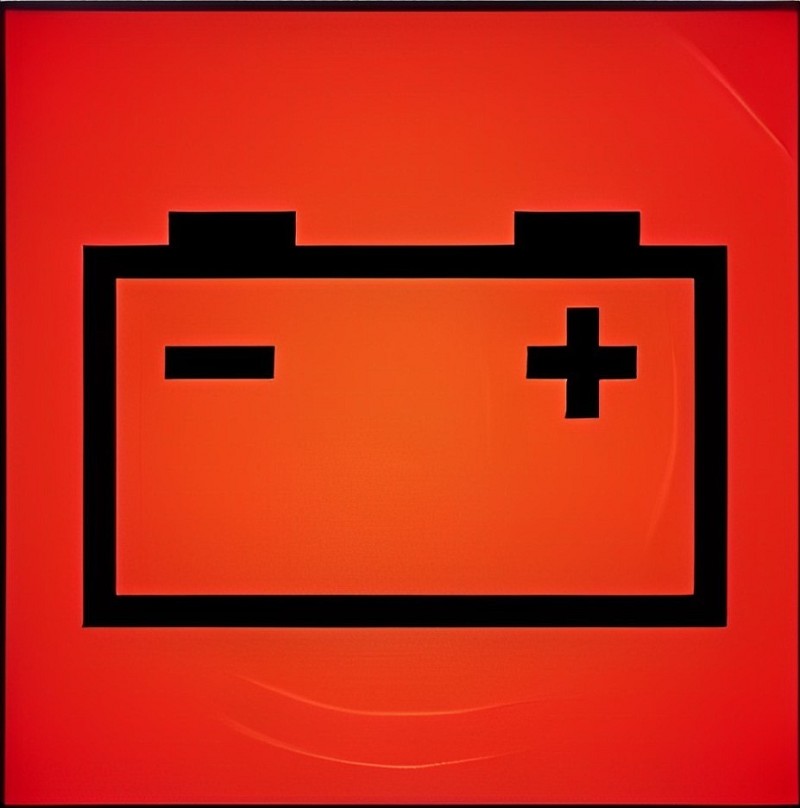
As you are driving the ignition warning light comes on. What does it warn of?
A hydraulic fault
Low air pressure
Low oil pressure
An electrical fault
What should you first check before moving to the RIGHT?
The offside mirror
Behind over your right shoulder
Behind over your left shoulder
The nearside mirror
You are about to move off. You should always;
Signal right with indicator and arm together
Use only the offside mirror and move away quickly
Extend your right arm as far as you can out of the window
Use your mirrors and look behind
In which THREE of the following situations would you FIRST need to check your nearside mirror? MARK 3 ANSWERS:
Before moving out to pass a car parked on your left
After passing cars on your left
Before moving to the left
After passing pedestrians standing on the nearside kerb
Before moving out to the right
The MSM routine is used to negotiate a hazard. What do the initials MSM stand for?
Mirror signal manoeuvre
Manoeuvre signal mirror
Mirror speed manoeuvre
Manoeuvre speed mirror
You are turning right onto a dual carriageway from a side road. Your vehicle is too long for the central gap. How should you proceed?
Edge out slowly so other traffic will see you
Wait until it is clear from both directions
Move out blocking traffic from the right
Move forward and wait in the middle
You are turning right at a T junction. Your view to the right and left is blocked due to parked vehicles. You should:
Ask a passenger to assist by waving you out when clear
Edge out until you are about 1 metre over the give way lines
Ease forward until you can see clearly past the vehicles
Lean forward to get a better view without crossing the give way lines
Motorcycle riders are more at risk from other road users. This is because they:
Cannot give arm signals
Are more likely to break down
Are easier for other road users to see
Are more difficult for other road users to see
What is the MAIN cause of motorcycle collisions?
Other drivers
Icy roads
Wet roads
Other motorcycles
At road junctions which of the following are most at risk? MARK 3 ANSWERS:
Cyclists
Pedestrians
Lorry drivers
Motorcyclists
Car drivers
Driving too close to the vehicle in front will:
Decrease your view ahead
Decrease the view of following drivers
Increase the view of following drivers
Increase your view ahead
At junctions it is difficult to see motorcyclists because they:
Are smaller than other vehicles
Always wear black leathers
Always ride in the gutter
Are easily hidden in blind spots
Drivers should be aware that motorcyclists are more vulnerable ESPECIALLY: MARK 3 ANSWERS
On poor road services
In gusting winds
To emerging vehicles
When exiting motorways
Near zebra crossings
At traffic lights
Before reversing you MUST always:
Change the Tachograph setting
Look all around
Use an audible warning device
Remove your seatbelt
You will be driving you vehicle in Europe. Which of these documents MUST you carry?
The vehicle workshop manual
Your medical examination form
Your national driving licence
The vehicle service record
When driving in Europe you must carry:
A valid breakdown cover certificate
The vehicle workshop manual
A valid certificate of roadworthiness
The vehicle registration document
You intend to drive in Europe. What must you carry?
A valid breakdown cover certificate
Your vehicles workshop manual
A valid certificate of roadworthiness
Your national driving licence
You can help to reduce the impact of road transport on the environment by: MARK 2 ANSWERS:
Increasing your overall speed
Reducing rest periods
Braking in good time
Avoiding high gears
Avoiding over-acceleration
As a driver you can help to protect the environment by:
Leaving your engine running in traffic jams
Filling your fuel tank with red diesel fuel
Driving faster to reduce traveling time
Avoiding town centres and using bypasses
As a driver you can help to ease traffic congestion by:
Planning routes to avoid the busy times
Avoid using motorways for all journeys
Driving on motorways for all journeys
Planning routes to avoid driving at quiet times
Which three of the following could cause unnecessary pollution to the environment? MARK 3 ANSWERS:
High level exhaust system
Badly maintained vehicles
Vehicles driven poorly
Regular servicing
Excessive exhaust fumes
Diesel fuel has been spilled on the road. This will cause particular danger to:
Cars
Motorcycles
Horses
Lorries
What must you do after filling your fuel tanks? MARK 2 ANSWERS:
Check your fuel gauge
Complete the fuel log sheets
Check that the filler caps are closed
Clean up any fuel that has spilled
Check your Tachograph
Return the pump keys to the office
Your vehicle leaks diesel fuel at a roundabout. This will most affect:
Car drivers
Motorcyclists
Towed vehicles
Three-wheel vehicle drivers
You have lost the filler cap to your diesel tank. You should:
Get a replacement before driving
Only fill the tank half full
Drive slowly back to your depot
Push a rag into the filler pipe
The vehicle ahead is being driven by a learner driver. You should:
Keep calm and be patient
Sound your horn and overtake
Put your headlights on full beam
Drive up close behind
You are driving towards a zebra crossing. Waiting to cross is a person in a wheelchair. You should:
Wave to the person to wait
Wave to the person to cross
Continue on your way
Be prepared to stop
You have stopped at a pelican crossing. A person with special needs is crossing slowly in front of you. The lights have now changed to green. You should: MARK 2 ANSWERS:
Allow the person to cross
Edge forward slowly
Sound your horn
Drive behind the person
Be patient
Drive in front of the person
Which sign means that there may be people walking along the road?
0%
0
0%
0
0%
0
0%
0
You are turning left at a junction. Pedestrians have started to cross the road. You should
Stop and wave at them to cross
Go on giving them plenty of room
Give way to them
You are turning left from a main road into a side road. People are already crossing the road into which you are turning. You should
Continue as it is your right of way
Signal to them to continue crossing
Wait and allow them to cross
Sound your horn to warn them of your presence
You are at the road junction turning into a minor road. There are pedestrians crossing the minor road. You should:
Carry on; the pedestrians should give way to you
Signal to them to continue crossing
Sound your horn to let the pedestrians know that you are there
Stop and wait for the pedestrians to cross
You intend to turn right into a side road. Just before turning you should check for motorcyclists who might be:
Emerging from the side road
Following you closely
Overtaking on your left
Overtaking on your right
What action would you take when elderly people are crossing the road?
Tap the horn in case they are hard of hearing
Rev the engine to let them know that you are waiting
Wave them across so they know that you have seen them
Be patient and allow them to cross in their own time
You see two elderly pedestrians about to cross the road ahead. You should:
Stop and wave them across the road
Speed up to get past them quickly
Expect them to wait for you to pass
Be careful they may misjudge your speed
You are coming up to a roundabout. A cyclist is signaling to turn right. What should you do?
Signal the cyclist to move across
Give a horn warning
Overtake on the right
Give the cyclist plenty of room
You are waiting to come out of a side road. Why should you watch carefully for motorcycles?
Motorcycles have right of way
Police patrols often use motorcycles
Motorcycles are usually faster than cars
Motorcycles are smaller and hard to see
In daylight an approaching motorcyclist is using a dipped headlight. Why?
So that the rider can be seen more easily
The rider is inviting you to proceed
To improve the rider's vision
To stop the battery overcharging
Motorcyclists should wear bright clothing mainly because:
The colours are popular
It helps keep them cool in summer
They must do so by law
Drivers often do not see them
Motorcyclists will often look round over their right shoulder just before turning right. This is because:
Looking around helps them balance as they turn
Motorcycles do not have mirrors
They need to listen for following traffic
They need to check for traffic in their blind area
At road junctions which of the following are most vulnerable? MARK 3 ANSWERS:
Cyclists
Pedestrians
Motorcyclists
Lorry drivers
Car drivers
As you approach a pelican crossing the lights change to green. Elderly people are halfway across. You should:
Flash your lights in case they have not heard you
Rev your engine to make them hurry
Wave them to cross as quickly as they can
Wait because they will take longer to cross
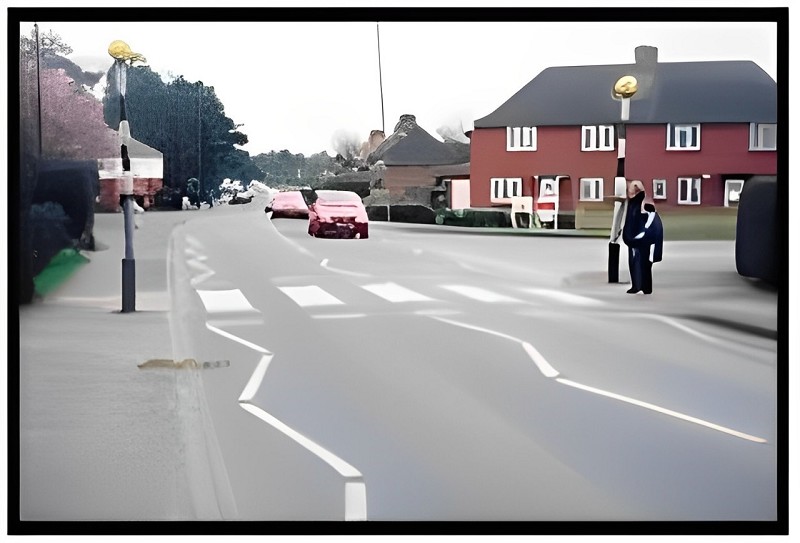
You are approaching this crossing. You should:
Prepare to slow down and stop
Drive on unless the pedestrians step out
Speed up and pass by quickly
Stop and wave the pedestrians across
You are following a motorcyclist on an uneven road. You should:
Allow the same room as normal because road surfaces do not affect motorcyclists
Overtake immediately
Allow less room so you can be seen in their mirrors
Allow extra room in case they swerve to avoid pot-holes
You are following two cyclists. They approach a roundabout in the left hand lane. In which direction should you expect the cyclist to go?
Straight ahead
Right
Left
Any direction
Which THREE of the following are hazards motorcyclists present in queues of traffic? MARK 3 ANSWERS:
Passing very close to you
Filtering between the lanes
Riding with their headlight on dipped beam
Riding in single file
Cutting in just in front of you
How would you react to drivers who appear to be inexperienced?
Overtake them as soon as possible
Flash your headlights to indicate that it is safe for them to proceed
Sound your horn to warn them of your presence
Be patient and prepare for them to react more slowly
You are following a learner driver who stalls at a junction. You should:
Be patient as you expect them to make mistakes
Immediately steer around them and drive on
Start to rev your engine if they take too long to restart
Stay very close behind and flash your headlights
You are following a car driven by an elderly driver. You should:
Stay very close behind but be careful
Flash your lights and overtake
Expect the driver to drive badly
Be aware that the driver's reactions may not be as fast as yours
You want to turn right from a main road into a side road. Just before turning you should:
Stop and set the handbrake
Select first gear
Cancel your right-turn signal
Check for traffic overtaking on your right
You are driving in town. There is a bus at the bus stop on the other side of the road. Why should you be careful?
The bus may remain stationary
The bus may move off suddenly
The bus may have broken down
Pedestrians may come from behind the bus
How should you overtake horse riders?
Use your horn just once to warn them
Speed is not important but allow plenty of room
Drive up close and overtake as soon as possible
Drive slowly and leave plenty of room
You are driving on a main road. You intend to turn right into a side road. Just before turning you should:
Steer over to the left
Flash your headlamps
Adjust your interior mirror
Check for traffic overtaking on your right
Which sign means 'No stopping'?
0%
0
0%
0
0%
0
0%
0
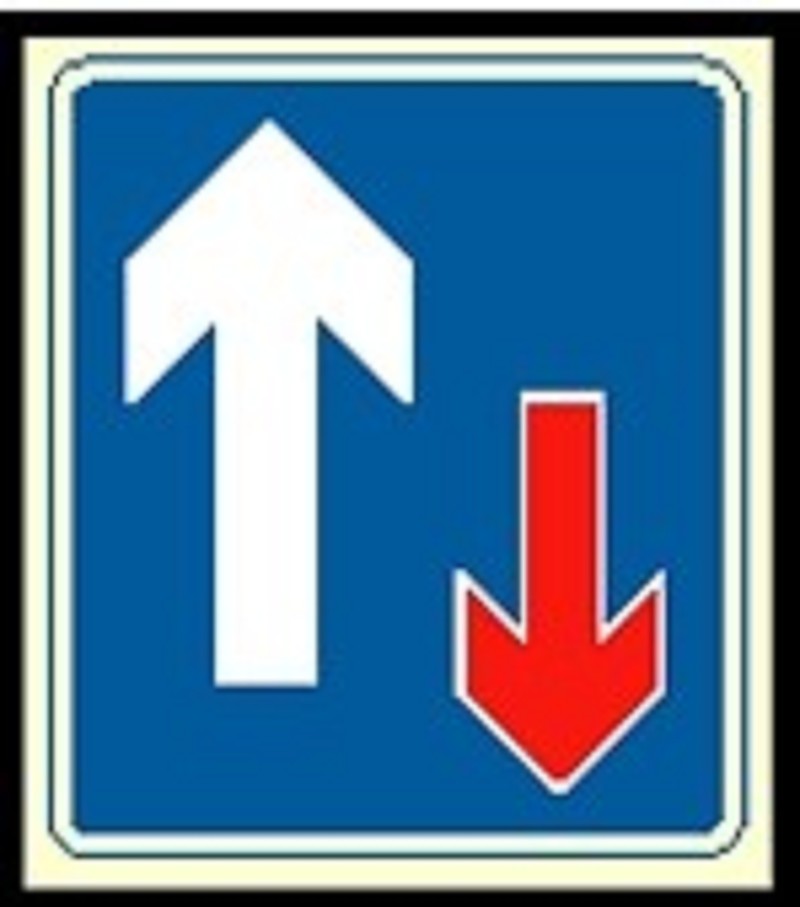
What is the meaning of this traffic sign?
Bus lane ahead
Give priority to vehicles coming towards you
End of two-way road
You have priority over vehicles coming towards you
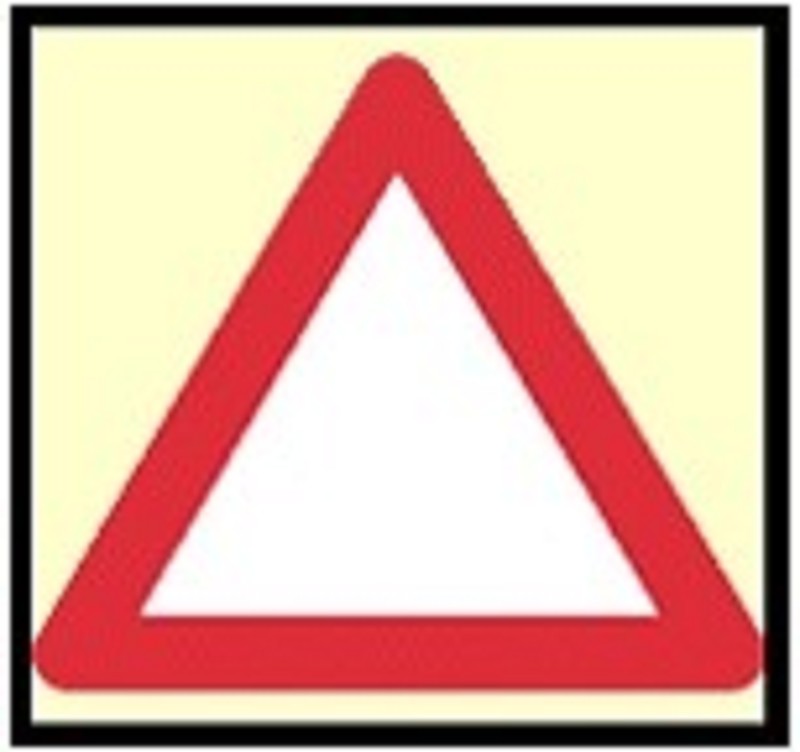
Which FOUR of these would be indicated by a triangular road sign? MARK 4 ANSWERS:
Ahead only
Low bridge
Road narrows
T-junction
Minimum speed
Children crossing
Which sign means that pedestrians may be walking along the road?
0%
0
0%
0
0%
0
0%
0
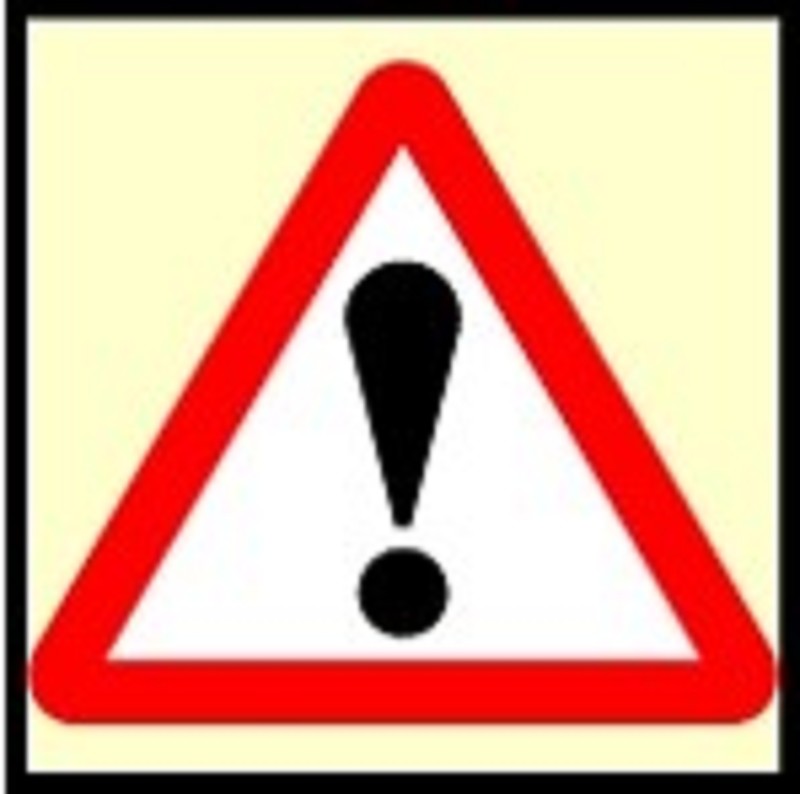
What does this traffic sign mean?
Service area ahead
Tyres liable to punctures ahead
Slippery road ahead
Danger ahead
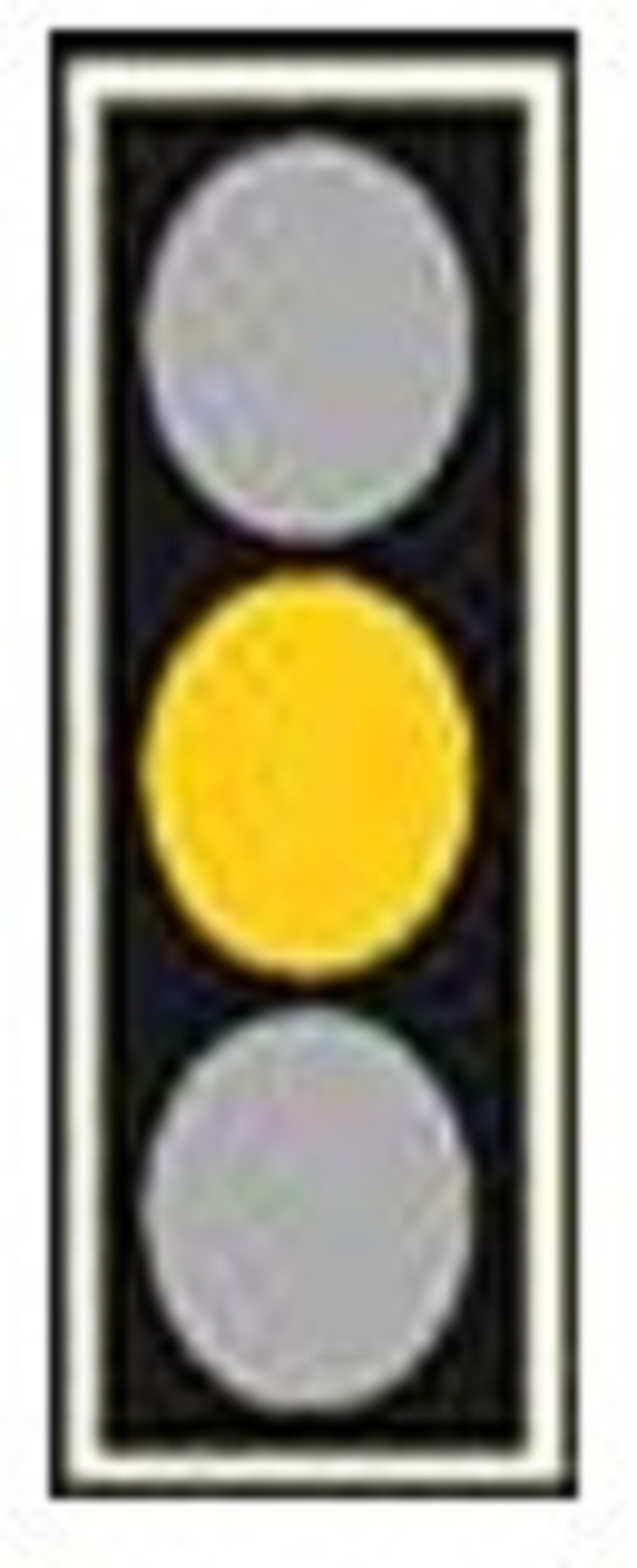
You see this traffic light ahead. Which light(s) will come on next?
Red alone
Green alone
Green and amber together
Red and amber together
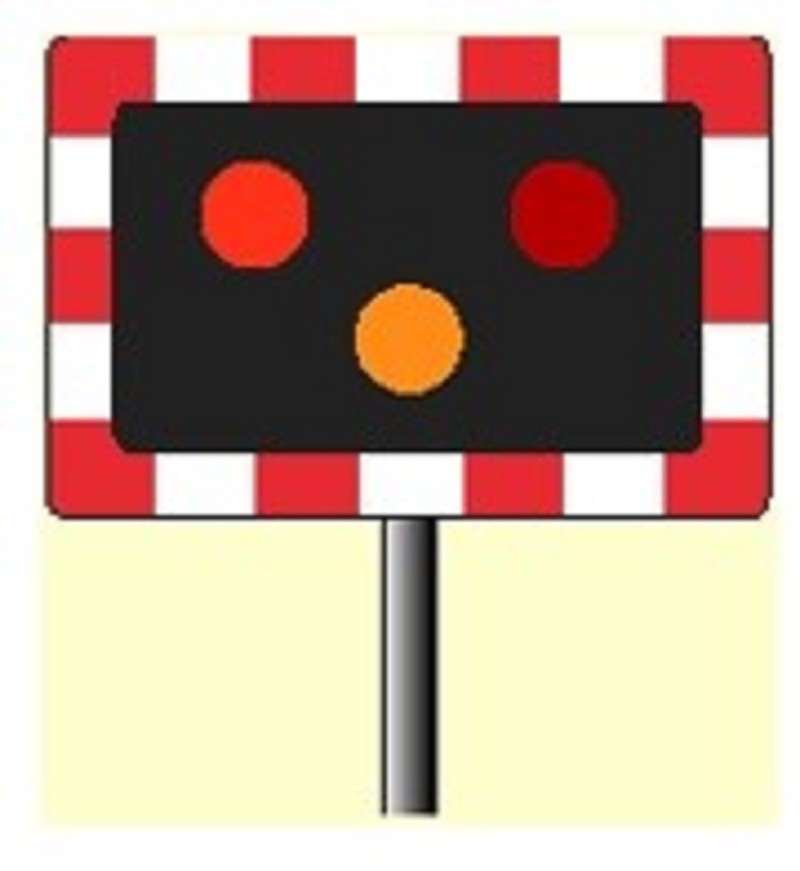
What should you do when you see these flashing red lights.
Stop and wait
Proceed if it is clear
Reduce the speed due to road works
Make a U-turn because the road is completely closed
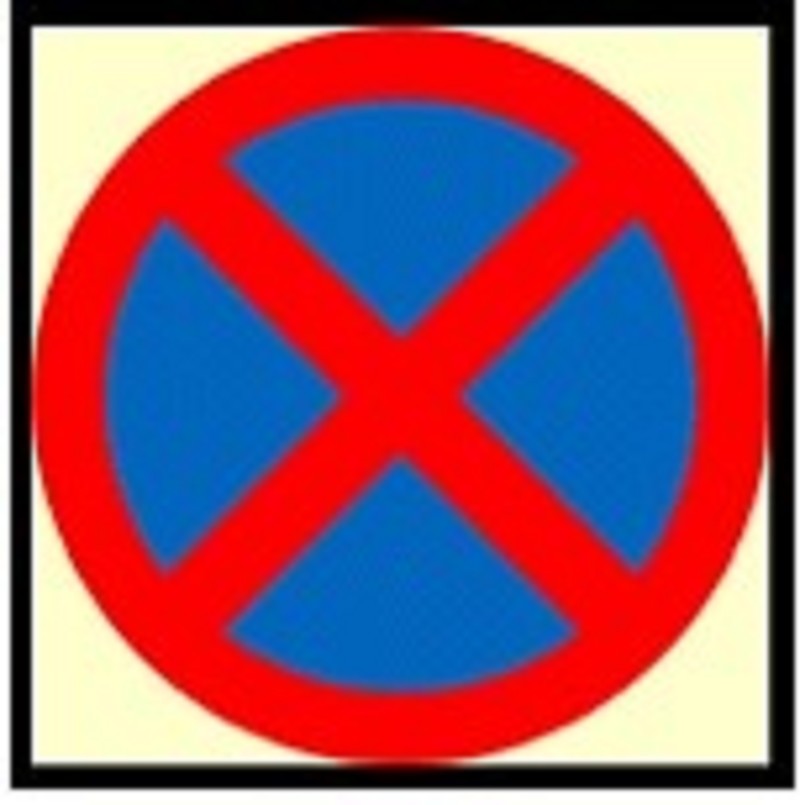
What does this sign mean?
No stopping at peak times
No stopping at any time
Stop only to set down passengers
Stop only to pick up passengers
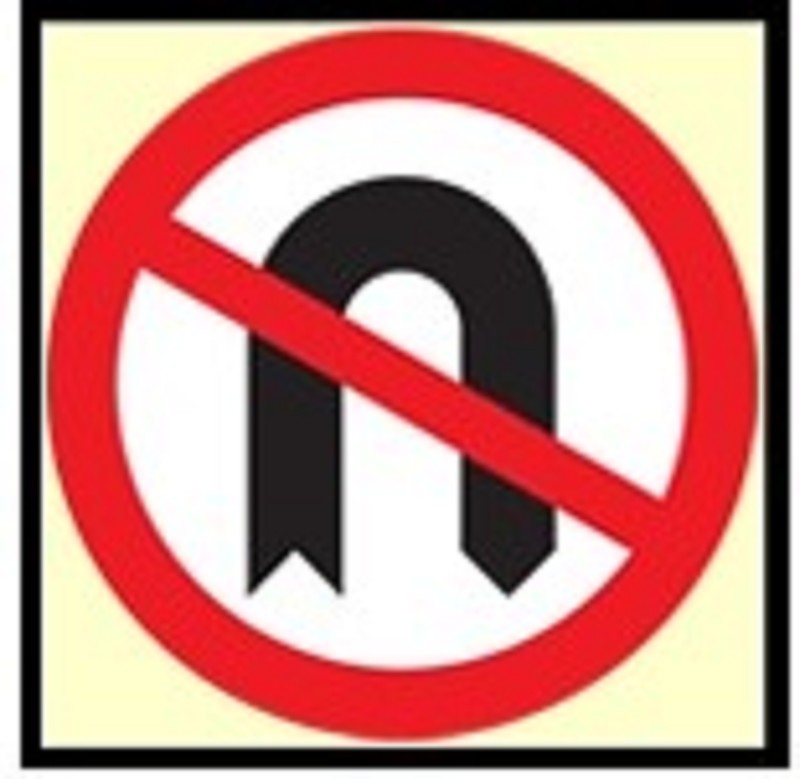
What does this sign mean?
No U-turns
End of one way system
One way system
Two way traffic
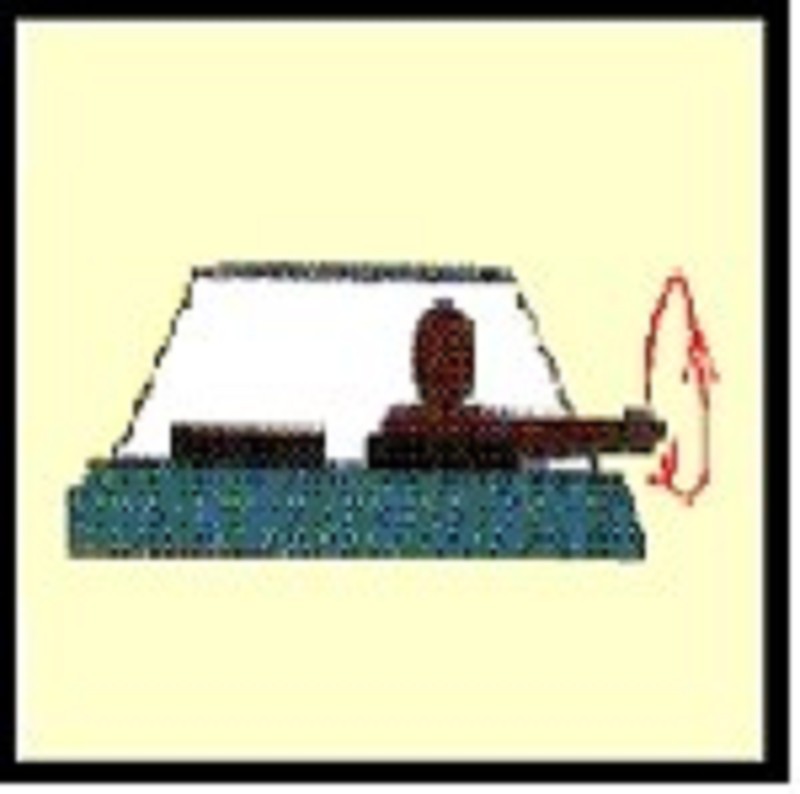
The driver of the car in front is giving this arm signal. This means the driver:
Intends to turn left
Wants you to go past
Wants you to keep back
Is slowing down
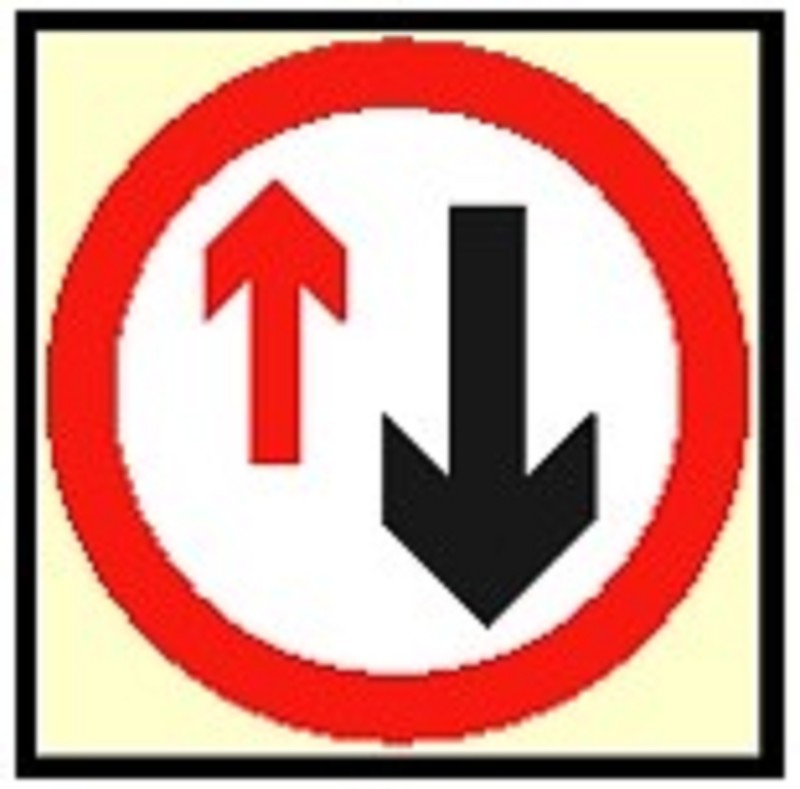
You are approaching this sign. Who has priority?
You have right of way
Smaller vehicles
Larger vehicles
Oncoming traffic
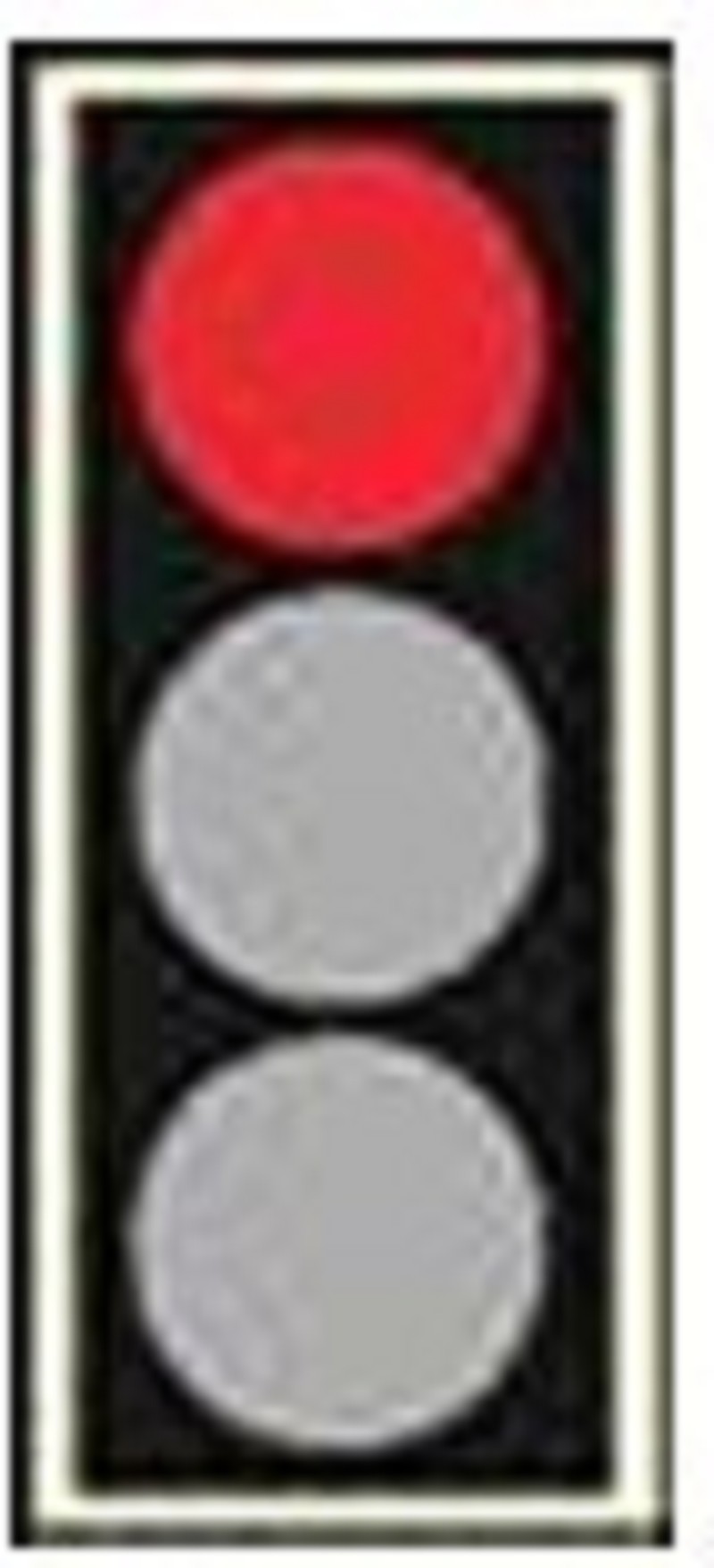
You are approaching a red traffic light. What signal or signals will show next?
Green and amber then green
Amber then green
Green then amber
Red and amber then green
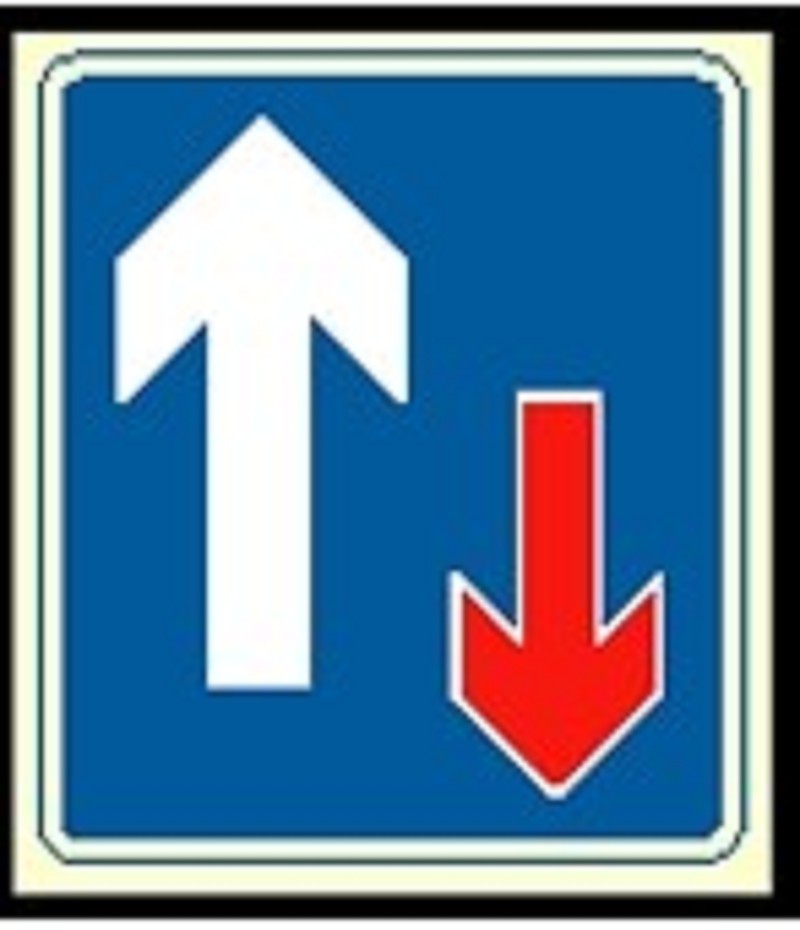
You see this sign ahead. What should you do?
Maintain your speed it's just an information sign
Stop and give way to oncoming traffic
Accelerate because you have priority
Slow down the road may be narrow ahead
{"name":"Cat D1\/D + D+E\/D1+E Mock Test 1", "url":"https://www.quiz-maker.com/QPREVIEW","txt":"Fifteen passengers on your vehicle would increase the weight by about:, As a guide, how many passengers equal the weight of about one tonne?, As you are driving along your brake air pressure warning light comes on. You should:","img":"https://www.quiz-maker.com/3012/CDN/102-5028146/cat-d-theory-test-malta.jpg?sz=1200-00000012441000005300"}
More Quizzes
CLASIFICACIÓN SIGUIENTE ETAPA
210
The Breakup Detector
1050
Part 5 Vocab
10525
DES
320
Intro Historical Writing
15820177
Free Science Trust and Literacy Assessment
201025582
Wii Sports Resort Part 1 - Can You Name Them All?
201047175
Beat 20th Century Trivia: Your Ultimate History
201046235
Ultimate Black Butler: Think You Know Kuroshitsuji?
201035900
Free Project Management Fundamentals Assessment
201026293
Am I Ready for Marriage: Test Your Readiness Now
201026293
Test Are You a Risk Taker? Uncover Your Social Boldness
201032256